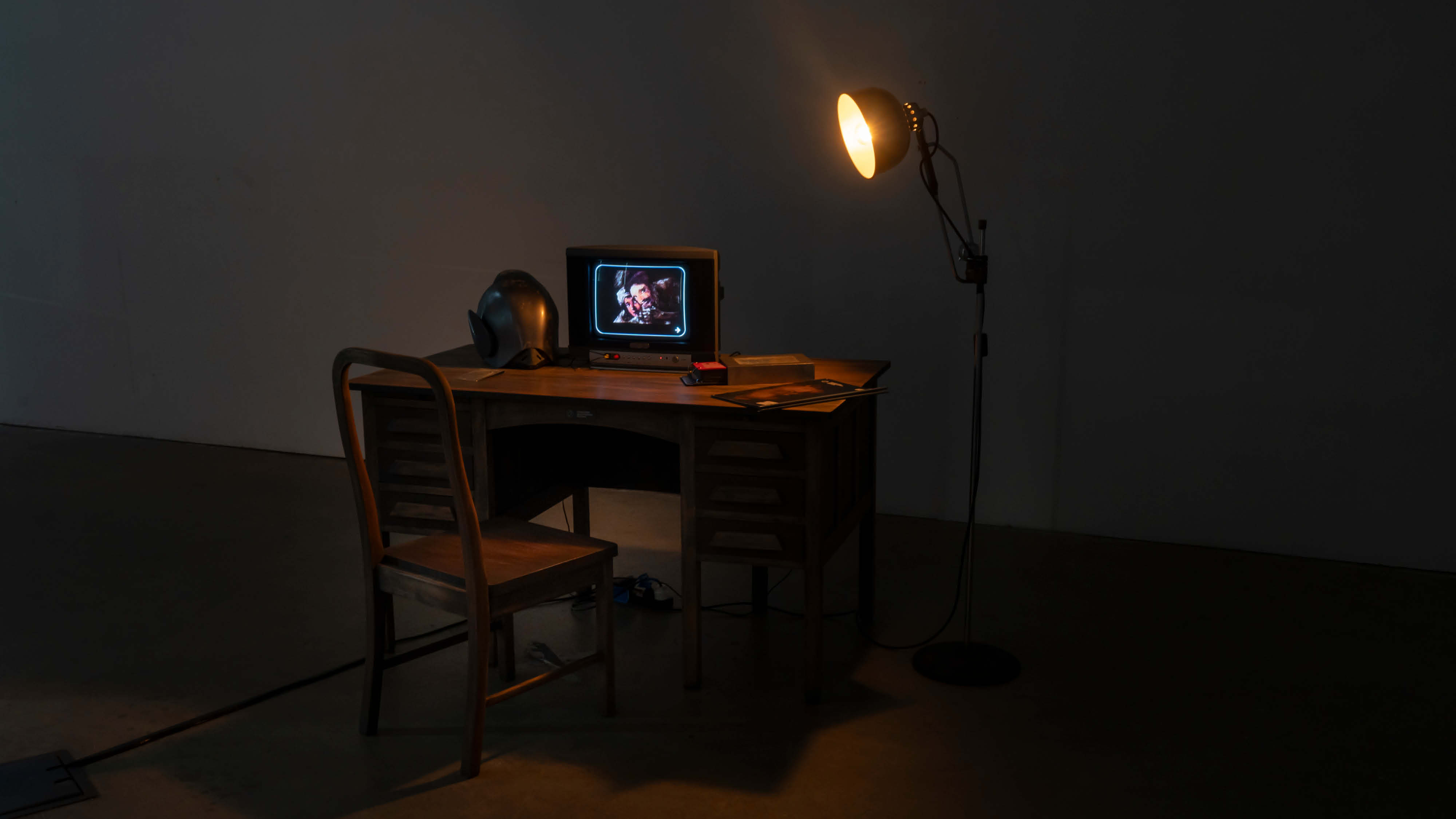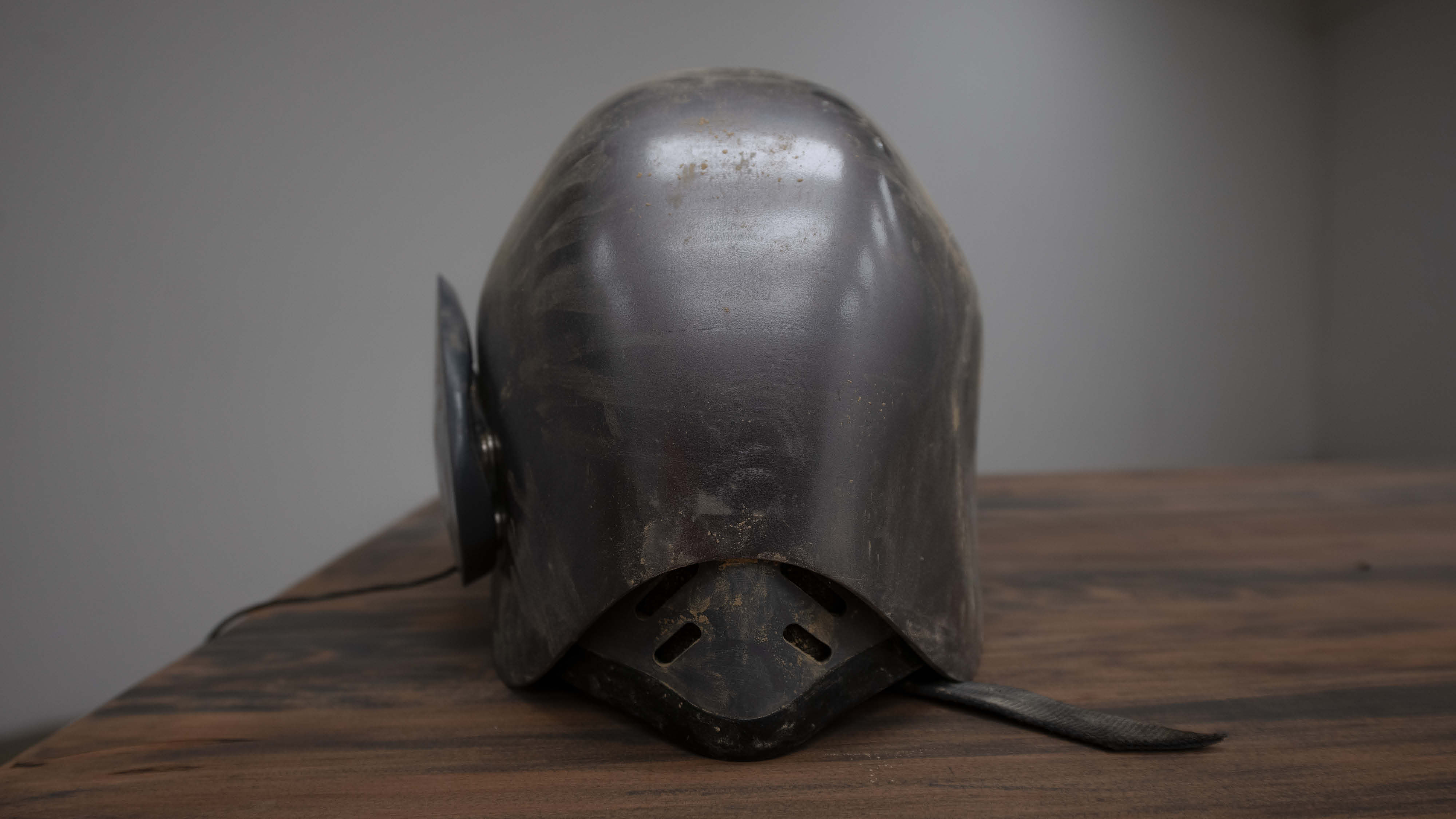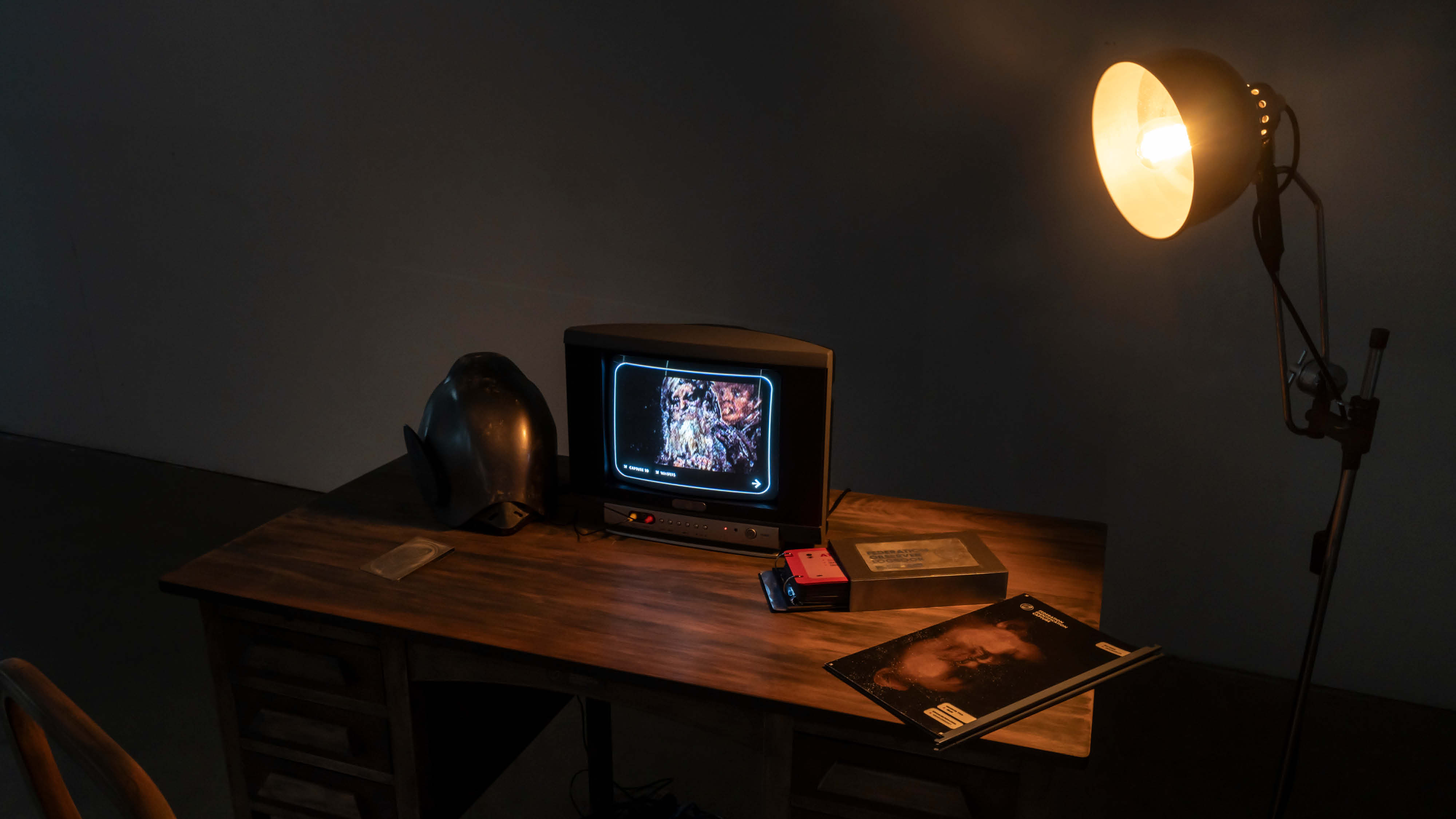

The thesis outcome is a fictional, polysemic narrative (Williams, 2011) comprising six related artefacts (a desk, helmet, logbook, identification file, visual monitor and audio-visual recording). These devices constitute the residue of a totalitarian federation’s investigation into a character’s identity and the enigma of his disappearance.
Designed as artefacts from a modernist, science fiction, dystopian future world, each object houses a component of the story and when ‘read’ together, they constitute a polysemic narrative. The study employs a heuristic inquiry activated through reflective practice. This approach is supported by three methods (world planning, iterative development and solicited feedback). The designed, narrative artefacts are
contextualised by exegetical writing. The thesis contributes to the field of polysemic storytelling (Eco, 1979; Schiller, 2018; Williams, 2011) through its design of a physical, narrative installation. The study also provides a designed example of Twyman’s (2008) assertion that ephemera may hold long-term significance when designed as artefacts that enable us to discover a character’s identity.



